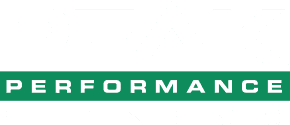January is the time of year when we set resolutions. The phrase “new year, new me” is a common mantra. It’s great to set new expectations for yourself; whether it is to commit to a new hobby, cooking healthier meals, spending more time with your kids, or deciding to lose weight. When it comes to making a New Year’s Resolution, broad or general statements are a good start, but most people need to do a little more to make them a reality. Sometimes when we simply make broad statements we end up off track pretty quickly. When you put pen to paper it helps you see and visualize these goals getting accomplished. Creating SMART goals is an effective method to create a plan of attack. Read on for step-by-step instructions to turn your resolutions into SMART goals!
- Specific
- Measurable
- Attainable
- Realistic
- Time-Oriented
Specific
Specific is the What, Why, and How of the S.M.A.R.T. model. Goals should be written out clearly and simplistically to emphasize these points.
Basic Example: “I want to run”
SMART: “I want to run 1 mile. by February 15, 2017 by exercising at Peak 3 days per week for 1 hour and start with ¼ mile the first week then ½ mile the second week and so on and so forth.”
Measurable
Goals should be measurable so there is hard evidence that you have accomplished the goal. Using the SMART goal above for this example, the goal can be measured by February 15th. The essential measurement is whether or not this client was able to run a complete mile. by February 15th.
Attainable
Goals should be achievable; they should push you a bit so you feel challenged, but well-defined enough so that you can attain them.
Using the example from above, this client wants to run 1 mile. in about a 6 week time frame. After speaking with your Exercise Physiologist, you have learned that just running 1 mile without training can cause injury, so building up little by little is the best option per week. Committing to exercising and utilizing a running program are the “How” of the SMART model.
If you plan your steps wisely and establish a reasonable timeframe, you should be able to carry out those steps. On the other hand, if a goal is impossible to achieve (i.e. the client wants to lose 30 lbs. in the same time frame), you may not try to accomplish it.
Realistic
Ask yourself if the goal is realistic. In reference to the client and their fitness goals, we have discussed how the goal itself is realistic within the specified time frame.
Another consideration might be if the goal is realistic for this client. Have they spoken with their doctor? Are they committed to exercising at least 3 days per week? Do they have any injuries that might prevent this goal from happening?
Time-Oriented
When are you going to achieve this goal? What can you do in the next six weeks? What are you going to do today? Today you can commit to exercising.
Short terms goals are the building blocks of our long-term goal. If the client’s ultimate goal is to run 5 miles, the long term goal should then be set in an attainable time frame, for example, a 16 week period. Along the way, setting smaller goals will set you up for success!
Utilize our SMART Goal tools to help you be successful in the New Year! Planning before January 1 is already a step towards a successful 2018!
By Corynne Duprey

